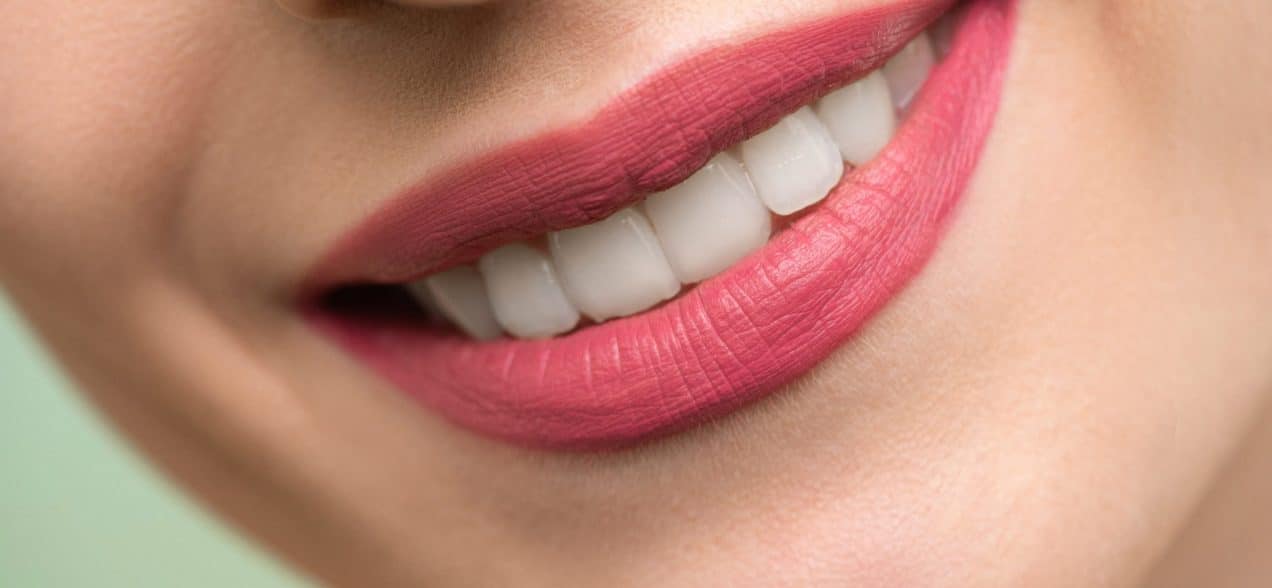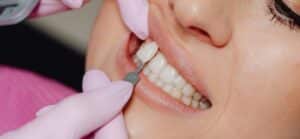
Are you interested in a smile makeover? Then dental veneers or dental crowns may be the appropriate cosmetic improvements for you. Crowns and veneers are both restorative procedures that can be utilized to improve the aesthetics and functionality of your teeth. Many people think veneers and crowns are the same because they offer the same benefits. Even though these two treatments may appear similar, they have some major differences. This article will help you understand the key difference between veneers and crowns to help you make the right choice.
What Is a Veneer?
Dental veneers are wafer-thin, custom-made tooth-like shells designed to cover the front surface of your teeth. They help improve your smile by correcting dental issues such as cracks, chips, gaps, discoloration, or minor misalignments. You can get just one veneer to cover a chipped or broken tooth or six to eight veneers to provide an even, symmetrical appearance to your front teeth.
Dental veneers come in one of three variations: porcelain, no-prep, or composite (chairside). Porcelain is more durable and aesthetically pleasing, making it the standard for most smile makeovers. However, porcelain veneers are relatively more expensive than composite veneers. Dental veneers do not add any strength to the tooth. Thus, it’s only a good option if the tooth is strong enough to support a restoration.
Dental Veneer Procedure
Big Smile Dental has a multi-step approach that guarantees your veneers will fit properly, function effectively, and give you a smile you’ve always wanted.
The initial stage is a cosmetic consultation with our dentist, who will inspect your teeth to see if veneers are appropriate for you. This requires creating bite impressions and X-rays to evaluate how the teeth are aligned. You will also have a comprehensive dental checkup to ensure no tooth decay or gum disease.
The veneers will be tailored to your facial structure, tooth color, style, and personality. While you wear temporary veneers, a skilled ceramist in our lab will create the veneers from high-quality dental porcelain using the design (mold).
Upon completion of the porcelain veneers, we will prepare your teeth for cosmetic bonding, and certain tooth surfaces may need to be modified to accommodate the veneer. We will remove about half a millimeter of tooth enamel from your front tooth surface to make room for the veneers. As soon as the preparation is complete, we will bind the veneers securely into place using a special cement and restore your beautiful smile.
We may require that you return in two weeks for a follow-up visit to inspect your gums and veneer placement. There is typically minimal to no tooth movement after veneer placement. If you clench or grind your teeth at night, you may need to wear a sleep guard to protect your veneers.
Pros and Cons of Dental Veneers
Like any dental restoration procedure, cosmetic veneers have their advantages and disadvantages. One of the main benefits of veneers is that they are more aesthetically pleasing than crowns in the long run, as they don’t show a gum margin after several years.
Other advantages of veneers include the following:
Disadvantages of dental veneers include:
Veneers can last for many years if proper oral hygiene is maintained. Dental veneers are not indestructible, so while you can eat almost anything, you should take precautions. High pressure can cause porcelain, a type of glass, to break. With the right aftercare, such as frequent dental checkups, cleaning, and flossing, veneers can last up to 15 years.
What Is a Dental Crown?
Dental crowns are tooth-shaped caps placed over existing teeth. They are typically used when a considerable portion of your tooth is missing or broken due to decay, trauma, or developmental defects. In cases of tooth decay, we must first remove the decaying portion of the tooth and repair some of the tooth structure so that it can support the crown.
Typically, dental crowns are made of porcelain, porcelain fused to a metal alloy (PFM), or an all-metal alloy. Using these materials, we will create a dental crown that fits securely over your tooth and then cement it in place. We usually use porcelain or zirconia for the front teeth as both materials look similar to natural teeth. In comparison, metal crowns are typically restricted to the back teeth.
Dental Crown Procedure
This dental procedure begins with a few X-rays to examine the roots and the surrounding bone of the tooth receiving the crown. If there is severe decay, risk of infection, or injury to the tooth’s pulp, a root canal treatment may need to be performed first.
Following this, the tooth will be prepared for the crown. This often involves filing down the surface of teeth and sometimes the sides of a tooth to ensure that the crown fits properly. After this, an impression of the tooth is made. This will be utilized in the creation of the permanent crown. After a mold has been created, you will be provided a temporary crown until the permanent one is ready.
When your permanent crown is ready, you will be asked to return for a second appointment to have the temporary crown removed and the permanent crown cemented. Teeth with porcelain crowns may be susceptible to movement, impairing your bite. If this occurs, the crown will need to be modified.
Pros and Cons of Dental Crowns
One of the main advantages of dental crowns is that they surround your natural teeth to prevent decay. Other advantages include the following:
Drawbacks of dental crowns include:
Veneers vs. Crowns – Aftercare
The recovery process after getting veneers is fairly short. Once the veneers are placed, and the anesthesia wears off, you can eat and chew as you would normally. However, taking a few precautions can help ensure you use them for the longest time possible. These precautions include:
As for dental crowns, you should avoid sticky and hard foods for the first 24 to 48 hours. You may treat your crown like your natural tooth after this period.
While a crowned tooth does not require any special care, it is crucial to remember that just because a tooth is crowned doesn’t mean it is safe from decay or gum disease. Crowned teeth or teeth with veneers can still develop cavities. Hence, it’s important to practice good oral hygiene, such as brushing your teeth at least twice a day, flossing daily, and using an antibacterial mouthwash. You should also regularly visit us for professional cleaning.
How Much Do Veneers and Crowns Cost?
Porcelain veneers typically range in price from $925 to $2,500 per tooth. On the other hand, dental crowns typically cost $1,000 to $3,500 per tooth. Crowns made of porcelain or ceramic are more expensive than all-metal crowns. However, dental insurance will often cover a portion of the cost of crowns but not veneers because they are considered cosmetic procedures.
Crowns vs. Veneers – Which Option May Be Right for You?
Deciding between dental crowns and veneers is quite a straightforward process for most people. You may need dental crowns if you have broken or damaged teeth or recently had a root canal. On the other hand, you may need porcelain veneers if aesthetics is your main concern and you want clean and healthy-looking teeth. Schedule a consultation with us at your earliest convenience so we can help determine which dental treatment is right for your condition.





